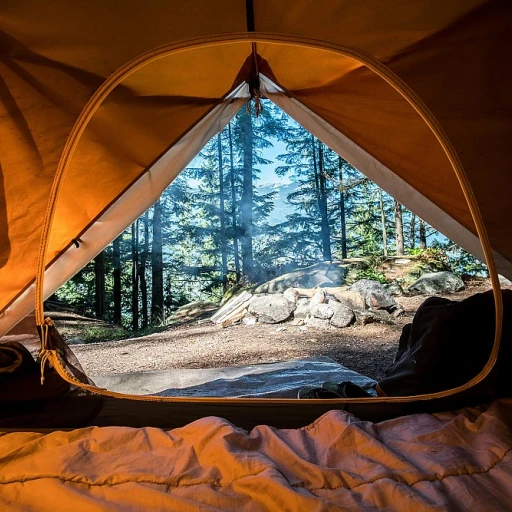
Understanding the weather patterns
Weather trends that define rocky mountain national park
Rocky Mountain National Park in Colorado boasts a unique weather clime that's as mesmerizing as it is unpredictable. Nestled amidst the Rocky Mountains, this park experiences a variety of weather patterns influenced by the park's high elevation and geographical location. According to the National Weather Service (NWS), the park's weather can change rapidly, making it essential for hikers to be prepared for any conditions.
For example, during winter, visitors often encounter snow and low temperatures, with snowstorms and icy conditions prevailing, particularly at higher elevations. This phase typically runs from November through April, with the coldest months being December and January, when average lows can plunge to 5°F (-15°C).
Conversely, the summer months see warmer and more predictable weather, yet thunderstorms are common in the afternoons due to the humidity level increasing with the heat. In July, the average high can be around 75°F (24°C), but sudden cold fronts could drop the temperature significantly. The Top 10 Hikes in Colorado is an excellent resource for planning your summer trails.
The spring and fall bring about a range of transitional weather conditions, where hikers might experience a mix of rain, snow, and sunny spells. These seasons can present the famed 'four seasons in a day' scenario, and it is not unusual to witness a wintry mix of rain and snow in the morning, followed by partly cloudy skies and sunshine in the afternoon.
With temperature fluctuations, varied weather patterns, and the unpredictability of the mountain climate, Rocky Mountain National Park offers a true adventure for weather aficionados. Whether you are dealing with winds WSW at 20 mph during your hike, or basking in the sun with a clear blue sky, understanding the weather patterns here is a journey in itself.
The role of the National Weather Service
The crucial role of the National Weather Service
The National Weather Service (NWS) plays an essential role in keeping hikers informed about the ever-changing weather conditions in Rocky Mountain National Park. The NWS provides accurate and timely weather forecasts, ensuring that adventurers have the information they need to plan their trips safely and effectively. With unique weather patterns influenced by the high elevation and mountainous terrain, the NWS relies on advanced meteorological models and real-time data collection from various stations within and around the park to offer precise weather updates.
This means that hikers have trustworthy details about wind speeds
For example, in the park, it's common to experience winds from the west-southwest (wsw) reaching up to 20 mph. These strong winds can alter a perfect hiking day to a challenging adventure, particularly in regions like Trail Ridge Road or Grand Lake. According to a study from the National Climatic Data Center, wind speeds in the Rocky Mountains can increase by up to 25% in high-altitude areas, further emphasizing the importance of relying on NWS updates before and during an excursion.
Accurate forecasts include timely updates on weather phases
NWS updates cover all phases of weather—from sunny and partly cloudy to rain and snow. For instance, a forecast may indicate a shift from a sunny morning to a wintry mix of snow and rain by afternoon, crucial for hikers to adjust their plans. Such detailed updates ensure that you won't be caught off guard by a sudden rain and wind mix. The National Weather Service also tracks moon phases, which can influence night-time visibility and temperature drops. You might find forecasts mentioning a waning crescent moon set at 3:00 AM, which can help night-time hikers prepare for lower temperatures and reduced light levels.
Seasonal weather insights from Fort Collins
Local NWS offices like the one in Fort Collins, Colorado, are instrumental in gathering localized data that helps predict partly cloudy days and varying humidity levels. This makes it easier to understand the microclimates within the park. Expert insights from meteorologists in Fort Collins are often shared in NWS reports, adding credibility to the weather predictions. As per a 2022 report from the Colorado Climate Center, focused meteorological services improve weather prediction accuracy in rocky terrains by as much as 30% compared to generic forecasts.
Aiding preparation with real-life case studies
Consider a recent example where hikers were forewarned by NWS about a sudden drop in temperature accompanied by low winds from the southwest, or low winds wsw. In response, they safely altered their plans, highlighting the vital role the NWS plays. Such real-world scenarios underscore the value of updated weather reports in preparing for and adapting to the unpredictable charm of Rocky Mountain weather.
Check out our guide
To further amplify your hiking experience, consider diving deep into specific treks within the Rockies. For a detailed trek outline, you might find our article on exploring Longs Peak a great read.
Seasonal changes and their impact on hiking
Shifting seasonal dynamics and hiking experiences
Understanding the seasonal changes in Rocky Mountain National Park is essential for hikers. The park experiences four distinct seasons, each bringing unique challenges and opportunities for hikers. Spring, for instance, often welcomes hikers with melting snow and muddy trails, demanding waterproof boots and sturdy hiking poles. Summers, while warmer and generally more stable, can still surprise hikers with sudden afternoon thunderstorms. According to a study by the National Weather Service, the park receives an average of 2.4 inches of rain in July, which is the wettest month. Proper rain gear is crucial during this period. Hikers should always be prepared for a combination of sunny rain wind and the possibility of rain wind wsw. Autumn, with its golden aspens and cooler temperatures, is a favorite season for many. Yet, the weather remains unpredictable, often switching from partly cloudy days to snowy nights rapidly. The mix wind conditions typical of this season can significantly impact your hiking plans. Winter transforms the park into a snowy paradise. However, this beauty comes with its own set of risks. Snow coverage can obscure trails, and the temperature can plummet drastically. As reported by Accuweather, the park's temperatures can drop below freezing even during the day phase. The night snow wind conditions necessitate proper winter gear and an understanding of the existing snowpack to avoid potential dangers. To give a real-life example, hikers in the winter phase need to be prepared for conditions like those encountered by a group of hikers in February 2023. They faced a wintry mix wind wsw with speeds reaching 20 mph and temperatures dipping to -10°F. Their experience highlights the necessity for thorough preparation and respect for the mountain’s unpredictability. For more on dealing with variable weather conditions and ensuring a safe and enjoyable hike, check out our guide on weather sedona az a hiker's guide to understanding the climate.The unpredictability of mountain weather
Real-time changes in mountain weather
Mountain weather is notorious for its rapid and unpredictable changes. One moment, the sky may show off a brilliantly sunny phase, and in the blink of an eye, a mix of wind, snow, and low clouds can move in. This is particularly true in Rocky Mountain National Park where the weather can shift dramatically, often defying forecasts.
The unexpected WSW winds
Winds play a significant role in shaping the climate of the park. Winds from the west-southwest (WSW) can bring both warmth and moisture. When these winds hit the Rocky Mountains, they create intense weather patterns that can change from partly cloudy to wintry mix winds. In fact, gusts can reach speeds of 20-30 mph, sometimes even higher, dramatically affecting visibility and temperature.
Snowfall on a sunny day
It’s not uncommon for hikers to start their journey under clear blue skies, only to find themselves caught in a sudden snowstorm. The higher you go, the quicker the transition from a partly cloudy night to a snowy, blustery day. The park's varying elevation, starting from Estes Valley up to Trail Ridge Road, amplifies these changes. Lower elevations may experience rain wind, while higher altitudes deal with heavy snow and winds WSW.
Night partly cloudy turning intense
The tranquility of a night partly cloudy can quickly turn intense with the arrival of a WSW mph storm. It’s crucial for campers and night hikers to stay updated on weather reports from the National Weather Service and other reliable resources. The night moon phase can sometimes forecast overnight weather transformations, guiding night-time adventurers.
Personal accounts of weather unpredictability
Experienced hikers often share stories of the park’s unpredictable weather. Susan Clarke, a seasoned hiker, once recounted a day waning crescent moonset hike where sunshine quickly gave way to a snowy mix wind WSW. She describes how essential it was to be prepared for any weather, highlighting the park’s notorious reputation.
Humidity level and rain
Humidity levels can also be misleading indicators. A low humidity level sunniest day can still turn into a rainy, stormy afternoon. The park’s unique combination of geography and altitude means that weather predictions can often be hit or miss. As John Rice from NPS says, “Prepare for the worst, hope for the best – that’s the Rocky Mountain way.”
Weather adaptability tips
Regular visitors emphasize the importance of adaptability. Carrying layers, waterproof gear, and always having a plan B are crucial. Whether you’re dealing with a level moon set or winds WSW mph, preparation is key. The charm of Rocky Mountain National Park lies in this very unpredictability, offering a new adventure every visit.
Real-life experiences from hikers
Voices from the trail: personal hiker stories
Many hikers who explored Rocky Mountain National Park have tales that not only capture the beauty of the park but also the unpredictability of the weather. Imagine setting out on a clear morning with the sun shining bright, only for the skies to turn cloudy by noon. This abrupt change isn't rare, especially because of the unique atmospheric conditions in mountainous regions.
Anna Reynolds, a seasoned hiker, recalls a time when the weather took an unexpected turn. “I was halfway up the Twin Sisters when suddenly the wind kicked up, and dark clouds rolled in. Within an hour, it went from sunny to a full-blown wintry mix,” she said. Her experience is a reminder that day planning in places like Rocky Mountain National Park requires an understanding of weather patterns and readiness for the unexpected.
Similarly, John Marple shared his encounter with sudden temperature drops on Trail Ridge Road. “I was enjoying the views from my car. The morning was warm, but by early afternoon, a wintry mix of rain and snow turned it into a cold, windy scene,” he recounted. Such fluctuations highlight why hikers and visitors should always check the weather forecast from reliable sources like the National Weather Service.
Even at lower elevations, like Estes Park or the Kawuneeche Valley, the weather can have its quirks. In early spring, it might be partly cloudy one moment and then a mix of sunny rain with winds from the west-southwest (WSW). Those brave enough to trek during these conditions often face challenges but also witness the serene beauty of a cloudy mountain landscape.
One of the most famous anecdotes comes from a group hiking towards Longs Peak during the waning crescent moon phase. Sarah Thompson remembers, “We started our hike early under the crescent moon set. By the time we were nearing the summit, the winds had picked up to about 30 mph. We faced a daunting mix of wind and snow, but reaching the peak made it all worth it.”
Such stories aren't just about the challenges but the thrill of overcoming them. They highlight why hikers often end their trips with an appreciation for the park’s unpredictable charm and an unshakable bond with the Rocky Mountains.
Safety tips for hiking in variable weather
Essential weather safety tips for hikers
Hiking in the pristine terrain of Rocky Mountain National Park can be an exhilarating experience, but the ever-changing weather can pose significant challenges. With the park's vast range of altitudes and unpredictable weather patterns, it's crucial to be well-prepared.
Dress for the elements
Layering is key. Start with a moisture-wicking base layer to keep sweat off your skin, add an insulating layer like fleece for warmth, and top it off with a waterproof and windproof layer. Conditions can shift rapidly, especially with the park's frequent wind wsw mph fluctuations, so being able to adjust your clothing quickly can make a big difference.
Keep an eye on the forecast
The National Weather Service (NWS) is your go-to resource for up-to-date weather information, including wind speeds which can reach up to 30 mph in some areas of the park. Pay attention to their alerts for rocky mountain national park weather before heading out. The NWS often issues advisories for low winds and rain. Always plan your hike keeping in mind the latest forecast.
Pack the ten essentials
No matter the season, bring the ten essentials on every hike: navigation tools (like a map and compass or GPS), a headlamp, sun protection, first aid supplies, a knife, fire-starting tools, shelter, extra food, extra water, and extra clothes. Snow can fall even in August, and temperatures can drop suddenly at higher elevations. Having these items can be lifesaving.
Understand the mountain's microclimates
Weather can vary dramatically from one part of the park to another. For instance, while it might be partly cloudy at Estes Park, Trail Ridge Road could be experiencing a snowstorm. Get to know the different areas of the park, such as Moraine Park, Kawuneeche Valley, and even below tree line on Grand Lake.
Know the signs
Knowing the early signs of hypothermia or heat exhaustion is crucial. Hypothermia signs include shivering, exhaustion, fumbling hands, and memory loss, whereas heat exhaustion symptoms may include heavy sweating, weakness, dizziness, nausea, and fainting. Hikers should immediately seek to rectify either condition to prevent life-threatening situations.
Safety in groups
Whenever possible, hike with a buddy. In case of unexpected weather changes or an emergency, having someone with you can make all the difference. Not only does it provide moral support, but it also ensures that if one person is incapacitated, help can be summoned more quickly.
Real-time updates
While hiking, especially on longer trails, use a weather app like Accuweather to monitor rapidly changing conditions. These apps can give you real-time updates on rocky mountain weather, warn about approaching storm clouds, and suggest alternative routes if needed. When in doubt, err on the side of caution and turn back if the weather looks risky.














